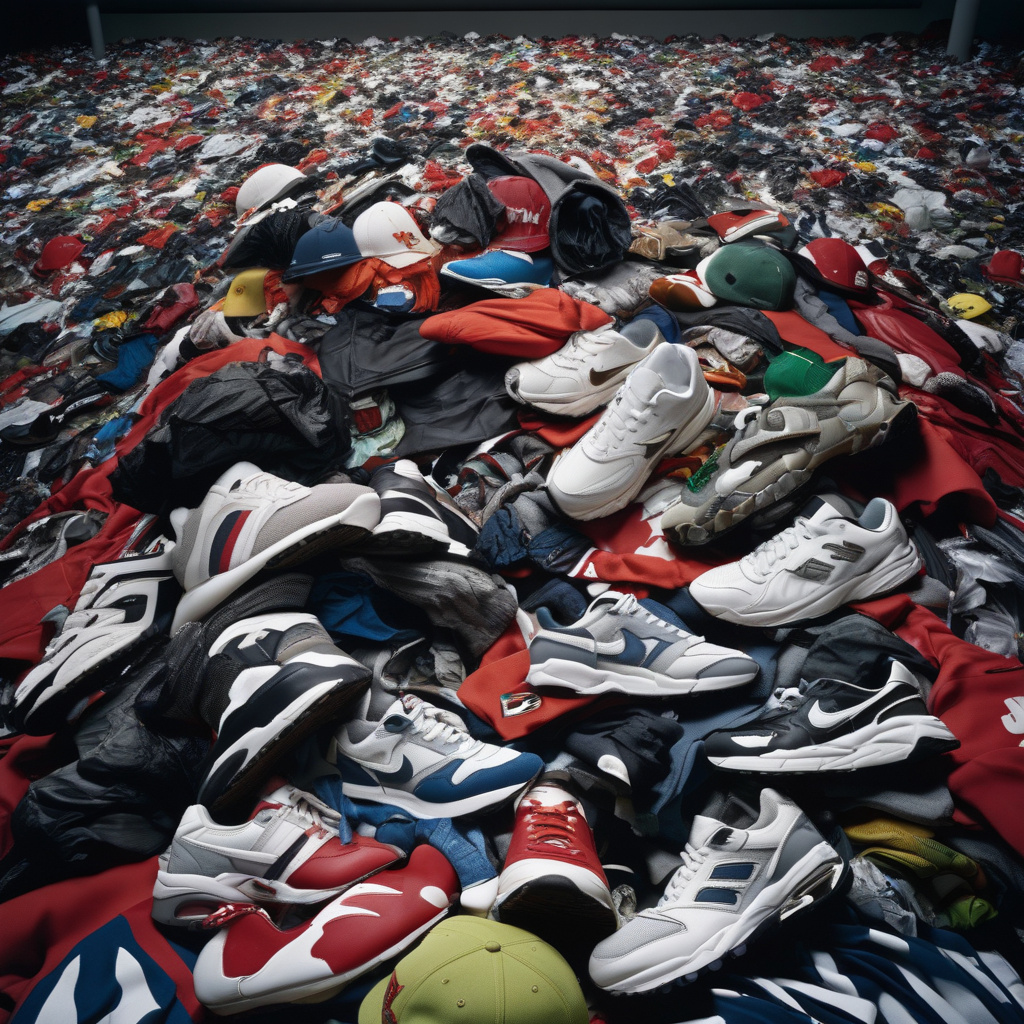Sports Partnerships: The Dark Side of Fashion’s Waste Crisis
In the realm of sports, partnerships with major brands like Nike and Adidas have long been coveted by teams and athletes alike. The allure of donning the latest cutting-edge gear and apparel is not only a matter of performance but also a statement of status and style. However, behind the scenes of these flashy sponsorships lies a dirty secret that is contributing to fashion’s already staggering waste problem.
Sportswear giants like Nike and Adidas churn out vast quantities of apparel and equipment for their sponsored teams each season. From jerseys and sneakers to bags and accessories, the sheer volume of merchandise produced is mind-boggling. While the intention may be to outfit athletes with the best gear possible, the reality is that a significant portion of these items end up going to waste.
Once the season ends or a new line is released, the surplus inventory of unsold or unused merchandise poses a serious dilemma for both the sports brands and the teams. With limited options for recycling or repurposing these items, the most common fate for this excess gear is ending up in landfills, where they contribute to the already overwhelming amount of textile waste generated each year.
The environmental impact of this cycle of production and disposal is undeniable. The resources expended in manufacturing these products, from water and energy to raw materials, are significant. When they are discarded after minimal use, it not only represents a waste of these valuable resources but also adds to the pollution and greenhouse gas emissions associated with textile production and decomposition.
However, in the face of this growing crisis, a ray of hope is emerging in the form of start-ups and designers dedicated to tackling the issue of sports merchandise waste. By embracing the principles of upcycling and circular design, these innovators are finding creative ways to give new life to the unused and unwanted gear from sports partnerships.
Upcycling, a process that involves repurposing discarded materials into new products of higher quality or value, has become a key strategy in combating fashion waste. By transforming old jerseys into stylish bags, outdated sneakers into trendy accessories, or excess fabric into limited-edition collections, these upcycling initiatives are not only diverting waste from landfills but also creating unique and sustainable alternatives to traditional sports merchandise.
One notable example of this trend is the partnership between a leading sportswear brand and a sustainable fashion label to upcycle unsold team jerseys into a limited-edition capsule collection. By reimagining these surplus jerseys as fashionable streetwear pieces, the collaboration not only gives these items a new lease on life but also raises awareness about the importance of responsible consumption and production in the sports industry.
As consumers increasingly demand transparency and sustainability from the brands they support, the pressure is mounting on sports partnerships to address their role in the fashion waste crisis. By investing in innovative solutions like upcycling and circular design, these collaborations have the potential to not only reduce waste and environmental harm but also set a new standard for conscious consumption in the world of sports.
In conclusion, while sports partnerships with major brands may have inadvertently contributed to fashion’s waste problem, the rise of upcycling initiatives and sustainable design practices offers a glimmer of hope for a more responsible and eco-conscious future. By reimagining waste as a valuable resource and embracing creative solutions to repurpose surplus merchandise, the sports industry has the opportunity to score a winning goal in the game against waste.
sports, partnerships, fashion waste, upcycling, sustainability












